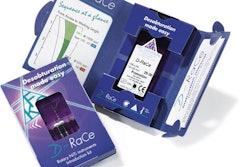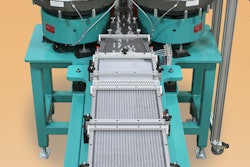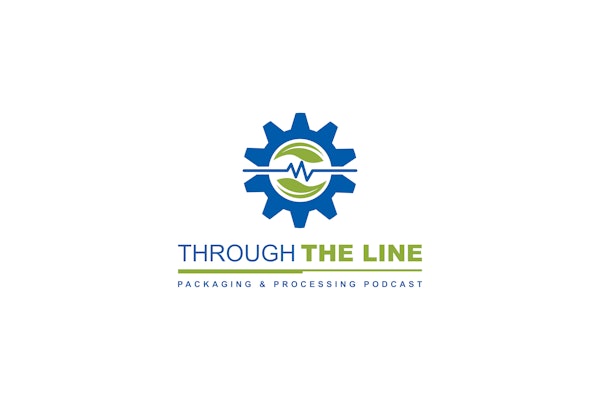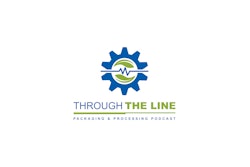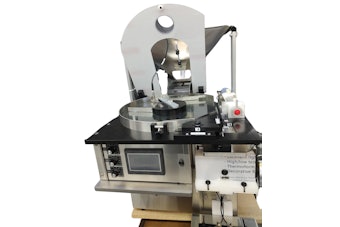The U.S. dispenses more than three billion prescriptions per year, and whatever version of healthcare reform finally makes its way into law will add significantly to those numbers. We just started to see “baby boomers” retire and their secondary label of “Generation Rx” is fitting. We will see dramatic growth in pharmaceuticals for many years to come.
In the past 10 years the U.S. pharmaceutical market has been under increasing pressure to “secure the supply chain.” That phrase generally means protecting the product from the manufacturer to the backdoor of the pharmacy. It should mean bringing a product safely to the patient and facilitating proper use. That is a safe supply chain.
Item-level authentication
For pedigree to be effective we have to be able to “see” the individual and match it with a pedigree in order to authenticate the container, otherwise we haven’t accomplished much. If this has to be done one by one, line of sight, we’ve hindered the supply chain, or at the very least, forced a significant time-consuming change in practice.
California, having given a pedigree and serialization reprieve in 2009 and then again in 2011, has now drawn a line in the sand at 2015. But the state, having realized the cost burden of RFID, is allowing serialized bar coding at the unit level, and California is allowing inference. If the manufacturer serializes the case and they track the individuals that enter that case they can “infer” that the case serial ID represents the individuals.
Many have implied that even providing item-to-case aggregation is too great a burden. To these naysayers, take a look around the marketplace. For instance, consider Omega Design’s “OmegaTrack.” Uniquely identified containers tracked through the packaging process allow for a new level of quality control within the packaging process. The system culminates in a robust item-to-case aggregation system that leaves no room for error, establishes a parent-child relationship, and item-level visibility entering the supply chain. And there are numerous other suppliers with different solutions aimed at the same goal.
We’ve known for some time that we would have to serialize in California. On a global scale, pharmaceutical manufacturers have sought item-level solutions in advance of the laws in Italy, for requirements in Turkey, and for pending legislation in Brazil, Argentina, and other countries. This isn’t new, and manufacturers are complying around the globe, so why not here in the U.S.?
Security all the way to the patient
So with parent-child aggregation becoming viable from numerous sources, it seems that all the pieces are in place to provide a secure supply chain. But then we enter the pharmacy and break open the manufacturer’s container to repack drugs into amber vials. There goes the pedigree, the serialized ID, and the ICH 9 stability-tested container.
The U.S. is the only country in the world still clinging to the antiquated practice of repackaging drugs in the pharmacy. This practice had a place 100 years ago in the world of the compounding pharmacist. It has no place in our modern world of global manufacturing in state-of-the-art facilities with packaging that has been designed and tested to protect the specific product being carried to market. If we truly want to end-to-end supply chain security, then the patient should receive the original manufacturer’s container and have the ability, via smartphone or the Internet, to authenticate that “yes, this container was manufactured by pharma company X and this is a real container.”
And there are other reasons we should consider bringing prescription packaging out of the dark ages. That serialized container can serve as a conduit from patient to care provider to physician, and to the pharmacist. Utilizing that serialized container will let the patient authenticate a product in their own home, and then they could access Web pages about the drug itself, receive information about the condition being treated, utilize the scanning of that code in adherence programs, communicate to caregivers when doses are taken, and use it to coordinate with other in-home health monitoring devices that are rapidly growing in popularity—namely, blood pressure cuffs, glucose monitors, scales, and oxygen/pulse monitors.
These devices are being fitted with chips to allow real-time communication of a patient’s condition to the caregiver community, and the missing link to date has been medication adherence. Knowing that a patient’s blood pressure is rising is not as impactful as knowing that a patient’s blood pressure is rising and they’ve missed five doses of Lisinopril in the last nine days. Knowing that a patient who is susceptible to CHF (Congestive Heart Failure) has gained three lbs overnight is important, but becomes more powerful when we know that they’ve missed a few doses of lasix or maybe they’ve taken the lasix and the weight is still going up, yet a more critical data point. The obvious better conclusion is that we see them missing a dose, not scanning (reporting), and we react to prevent the adverse event.
Improving patient outcomes
How could insurers use this data to create and promote healthier lifestyles? Adherent patients cost less. Nonadherent patients will have increased emergency room visits, increased hospitalization, and increased nursing home admissions. Monitoring medication administration is not merely a possibility, but a realistic need of the care and insurance communities. Sending the manufacturer’s original container home with the patient is one place to start.
If you think this is far-fetched, then have a look at CMS (Center for Medicaid and Medicare Services)-driven programs such as Patient Centered Medical Homes (PCMH), Care Transition programs (QIOSC), and more recently Medicare 5 Star Ratings (under Medicare Part D). All are pay-for-performance programs. All of these are saying the same thing. CMS is going to hold caregivers responsible for improving the health outcomes of patients in their programs and CMS is going to compensate the caregivers on the performance. Performance measures have been developed and reimbursement is going to be directly linked to the performance measures. Medication adherence is a key part of all of these programs, maybe nowhere more prominently than in the Medicare 5 star ratings where it is called out by disease condition (specifically diabetes, CHF, COPD, and Lipidemia (cholesterol).
These pay-for-performance programs need the pharmaceutical community to support them with more functional packaging that can facilitate better adherence and allow them to reach their goals. The start should be getting serialized original manufacturer’s containers to go home with the patient. There will be different package forms, and there will be numerous tools that tie into the packages, but establishing that link is the key to beginning.
Today, $290 billion a year is wasted due to poor medication adherence. Industry’s goal should be to reduce or eliminate that figure in the next 10 years, and maybe the way to start is by providing a truly secure pharmaceutical supply chain from manufacturer to patient.
Walter Berghahn is president of SmartRmeds for Life (www.smartmeds4life.com) and executive director, Healthcare Compliance Packaging Council (www.hcponline.org).



